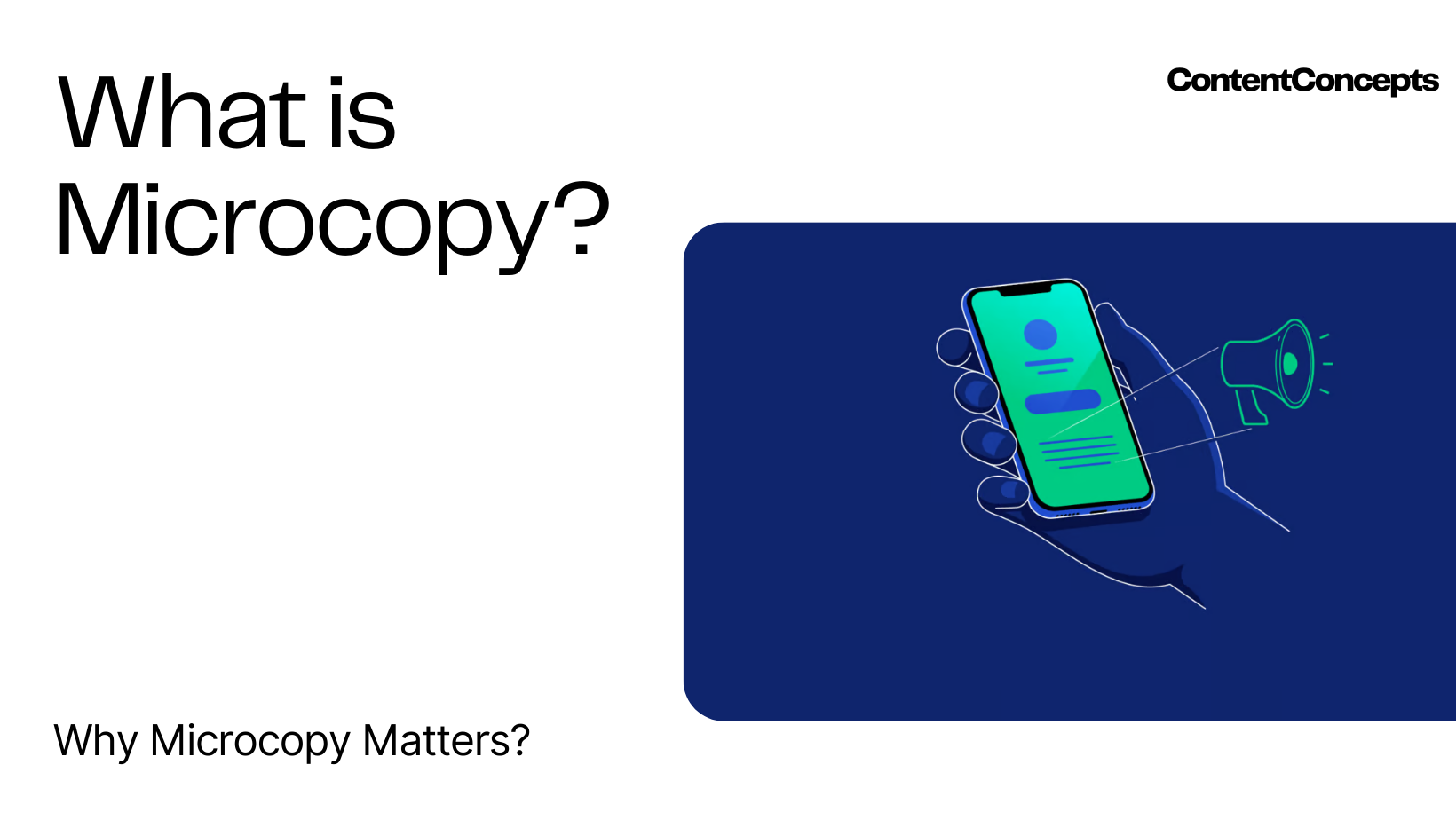Microcopy Writing, UX Writing, UI Writing
 ContentConcepts
ContentConcepts
The terms "microcopy," "UI copy," "UX copy," and "microcontent" are often used interchangeably, but there are some subtle differences between them.
Microcopy is the smallest bits of text that users interact with on a digital product or service. It includes things like button labels, error messages, and tooltips.
UI copy is the text that is used to create the visual interface of a product or service. This includes things like headings, subheadings, and call-to-action text.
UX copy is the text that is used to communicate with users and guide them through a product or service. This includes things like help text, error messages, and confirmation messages.
Microcontent is a broader term that can refer to any small piece of text that is used on a digital product or service. This includes things like microcopy, UI copy, and UX copy.
So, which term is the right one to use? It depends on the context. If you are talking about the smallest bits of text in a UI, then microcopy is the correct term. If you are talking about any text that appears in a UI, then UI copy is the correct term. If you are talking about text that helps to create a positive user experience, then UX copy is the correct term. And if you are talking about short pieces of text that are used to communicate information, then microcontent is the correct term.
Ultimately, the most important thing is to use the term that is most appropriate for the situation. By understanding the subtle differences between these terms, you can use them correctly and create a better user experience for your users.
What are some examples of microcopy?
| Microcopy | Description |
| Button labels | Concise labels on buttons indicating the action they perform (e.g., "Submit," "Cancel," "Save"). |
| Error messages | Messages that inform users about encountered mistakes or issues, guiding them on how to fix them. |
| Tooltips | Contextual hints appear on hover to provide extra information about an element's function. |
| Progress indicators | Visual cues showing the advancement of tasks, like loading or form completion, to guide users. |
| Help text | Guidance or instructions offer clarity to users while interacting with features or forms. |
| Form labels | Descriptions for input fields in forms, indicating what type of information should be entered. |
| Call to action text | Persuasive phrases encourage users to take specific actions, like signing up or making a purchase. |
| Error feedback | Information about encountered issues with suggestions for resolution, enhancing user experience. |
| Success messages | Messages confirming the successful completion of user actions, such as form submissions or orders. |
| Confirmation messages | Requests for user verification before irreversible actions, like deletion or unsubscribing. |
| Empty State | Messages or visuals are displayed when UI elements have no content, guiding users on the next steps. |
Subscribe to my newsletter
Read articles from ContentConcepts directly inside your inbox. Subscribe to the newsletter, and don't miss out.
Written by

ContentConcepts
ContentConcepts
Our English manuscript editors specialise in editing manuscripts written by authors whose first language is not English. Get the right word, right sentence structure and convey your research findings effectively.